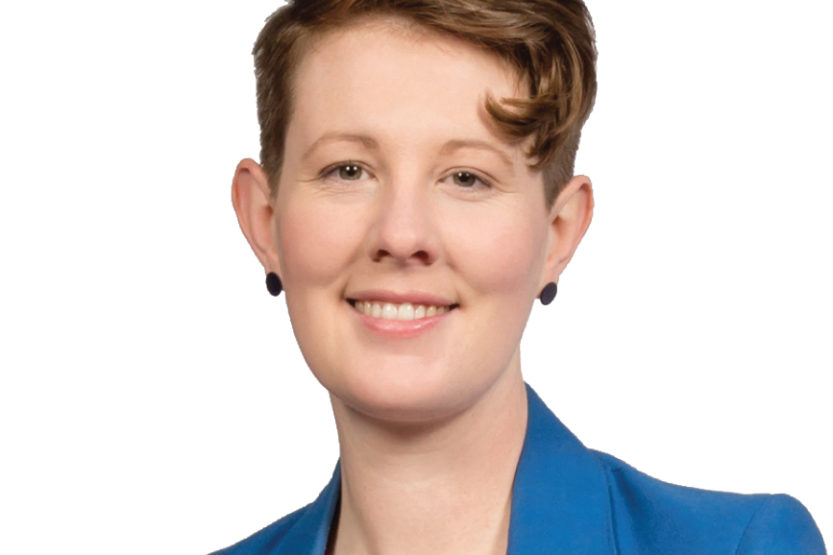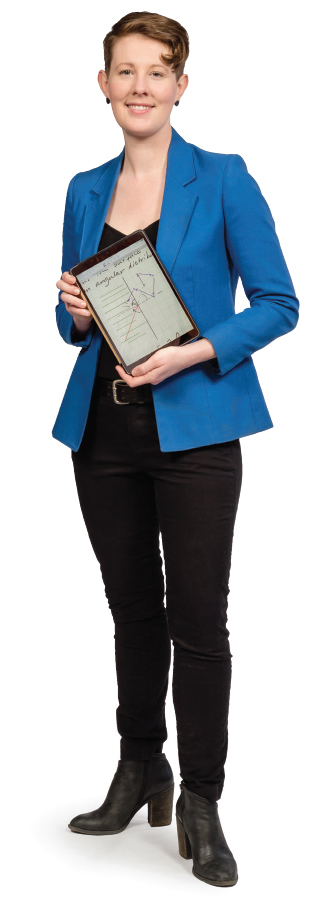In Class: Power Source
 Nuclear engineer Katy Huff (Image by L. Brian Stauffer)
Nuclear engineer Katy Huff (Image by L. Brian Stauffer) I teach Nuclear Power Economics and Fuel Management, which is kind of a mouthful. It’s an undergraduate class. The students learn about all of the steps of nuclear power production: mining uranium; chemical processes (e.g., milling and conversion); isotopic processes (e.g., enrichment) and mechanical processes (e.g., fuel fabrication). All of these things contribute to the front end of the fuel cycle. Then we talk about the physics of the reactor and what happens at the back end of the fuel cycle—how to store and dispose of spent nuclear fuel properly. And we talk about all of that in the context of economics and efficient management of nuclear fuel.
I teach my class with online IPython Notebooks, which provide interactive computation. The students can play with code and see how equations change in real time when they change a parameter. I’ll ask, “Okay, we’re going to change the price of uranium enrichment. How will this affect the price of nuclear fuel?” And I’ll call on random students. They’ll describe what they’d expect to happen. Then they’ll change a parameter and rerun the cell in the notebook. And their expectations are either confirmed or denied.
I also teach a graduate class on reactor theory that is more math-based. It explores methods to solve the neutron transport equation. The neutron transport equation describes how to predict or determine the number, energy and angle of neutrons in a reactor. Reactor designers and analysts need to understand the characteristics of a reactor’s neutron population in order to keep the reactor “critical.” A critical reactor produces the same number of neutrons at each stage in the chain reaction, and therefore can maintain a constant, steady power level. We prefer to avoid reactors that have increasing (“supercritical”) or decreasing (“subcritical”) neutron populations. Supercritical reactors can be impossible to control, while subcritical reactors have the opposite problem—they eventually produce zero power.
In my graduate class, I teach with an iPad. That’s pretty common these days. I write on my iPad and it shows up on a screen. The students follow along, many of them writing their notes on their own iPads. I am also able to share the PDFs with them, which are searchable. The app I use is capable of recognizing my handwriting as text, which I find just amazing.
In my research, I do modeling and simulation of advanced reactors and fuel cycles. That is, I write computational tools and run large-scale simulations to investigate the physics inside new reactor designs, and to investigate options for recycling spent nuclear fuel.
I became a nuclear engineer because I’m worried about the climate. There’s only so much land to put wind farms on. The sun doesn’t always shine when you need electricity, and the wind doesn’t always blow. We don’t have enough storage capacity to allow renewables to power everything because they’re unreliable. The grid can’t handle that instability. I am all for renewables, but we’re not there yet, and we need to replace coal now. Immediately. Only nuclear can provide the reliable, emissions-free, base-load power that can do so.
Edited and condensed from an interview conducted on March 2, 2018.


